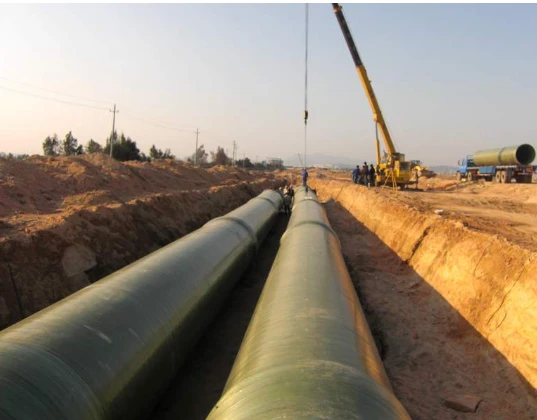
-
 Afrikaans
Afrikaans -
 Albanian
Albanian -
 Amharic
Amharic -
 Arabic
Arabic -
 Armenian
Armenian -
 Azerbaijani
Azerbaijani -
 Basque
Basque -
 Belarusian
Belarusian -
 Bengali
Bengali -
 Bosnian
Bosnian -
 Bulgarian
Bulgarian -
 Catalan
Catalan -
 Cebuano
Cebuano -
 China
China -
 China (Taiwan)
China (Taiwan) -
 Corsican
Corsican -
 Croatian
Croatian -
 Czech
Czech -
 Danish
Danish -
 Dutch
Dutch -
 English
English -
 Esperanto
Esperanto -
 Estonian
Estonian -
 Finnish
Finnish -
 French
French -
 Frisian
Frisian -
 Galician
Galician -
 Georgian
Georgian -
 German
German -
 Greek
Greek -
 Gujarati
Gujarati -
 Haitian Creole
Haitian Creole -
 hausa
hausa -
 hawaiian
hawaiian -
 Hebrew
Hebrew -
 Hindi
Hindi -
 Miao
Miao -
 Hungarian
Hungarian -
 Icelandic
Icelandic -
 igbo
igbo -
 Indonesian
Indonesian -
 irish
irish -
 Italian
Italian -
 Japanese
Japanese -
 Javanese
Javanese -
 Kannada
Kannada -
 kazakh
kazakh -
 Khmer
Khmer -
 Rwandese
Rwandese -
 Korean
Korean -
 Kurdish
Kurdish -
 Kyrgyz
Kyrgyz -
 Lao
Lao -
 Latin
Latin -
 Latvian
Latvian -
 Lithuanian
Lithuanian -
 Luxembourgish
Luxembourgish -
 Macedonian
Macedonian -
 Malgashi
Malgashi -
 Malay
Malay -
 Malayalam
Malayalam -
 Maltese
Maltese -
 Maori
Maori -
 Marathi
Marathi -
 Mongolian
Mongolian -
 Myanmar
Myanmar -
 Nepali
Nepali -
 Norwegian
Norwegian -
 Norwegian
Norwegian -
 Occitan
Occitan -
 Pashto
Pashto -
 Persian
Persian -
 Polish
Polish -
 Portuguese
Portuguese -
 Punjabi
Punjabi -
 Romanian
Romanian -
 Russian
Russian -
 Samoan
Samoan -
 Scottish Gaelic
Scottish Gaelic -
 Serbian
Serbian -
 Sesotho
Sesotho -
 Shona
Shona -
 Sindhi
Sindhi -
 Sinhala
Sinhala -
 Slovak
Slovak -
 Slovenian
Slovenian -
 Somali
Somali -
 Spanish
Spanish -
 Sundanese
Sundanese -
 Swahili
Swahili -
 Swedish
Swedish -
 Tagalog
Tagalog -
 Tajik
Tajik -
 Tamil
Tamil -
 Tatar
Tatar -
 Telugu
Telugu -
 Thai
Thai -
 Turkish
Turkish -
 Turkmen
Turkmen -
 Ukrainian
Ukrainian -
 Urdu
Urdu -
 Uighur
Uighur -
 Uzbek
Uzbek -
 Vietnamese
Vietnamese -
 Welsh
Welsh -
 Bantu
Bantu -
 Yiddish
Yiddish -
 Yoruba
Yoruba -
 Zulu
Zulu
grp absorber
Understanding GRP Absorbers Key Features and Applications
In the realm of materials and environmental engineering, the term GRP absorbers refers to a specific class of glass-reinforced plastic (GRP) structures designed for various applications, particularly in the absorption of sound, gases, or liquids. These absorbers leverage the inherent properties of glass fiber reinforcement coupled with the versatility of polymer matrices, making them valuable in industries such as construction, automotive, and waste management.
What is GRP?
Glass-reinforced plastic, or fiberglass, is a composite material made of a polymer matrix reinforced with glass fibers. This combination offers several desirable characteristics including high strength-to-weight ratio, corrosion resistance, and excellent durability. The term “GRP ” particularly highlights the efficiency and effectiveness of these materials in applications tailored towards absorption capabilities.
The Function of Absorbers
Absorbers serve a pivotal role in controlling various environmental factors. In acoustics, for example, sound absorbers reduce reverberation and improve sound quality by converting sound energy into a small amount of heat. In industrial contexts, chemical absorbers capture and neutralize harmful gases, thereby improving air quality and ensuring compliance with environmental regulations. Furthermore, in civil engineering, liquid absorbers can manage water infiltration, reducing the risk of damage from excessive moisture.
Applications of GRP Absorbers
1. Acoustic Insulation In the construction industry, GRP absorbers are primarily used in acoustically designed spaces such as theaters, concert halls, and recording studios. Their efficiency in sound absorption makes them a preferred choice for professionals aiming to create optimal audio environments. The lightweight nature of GRP materials also simplifies installation processes.
grp absorber

2. Environmental Protection GRP absorbers play a crucial role in mitigating the escape of harmful emissions in industrial applications. By effectively absorbing volatile organic compounds (VOCs) and other hazardous gases, these materials improve workplace safety and environmental health.
3. Water Management In urban planning and infrastructure, GRP absorbers are used in systems designed to capture and filter rainwater. This application not only prevents flooding but also promotes the sustainable use of water by facilitating its reuse for irrigation or aesthetic purposes, such as in decorative ponds.
4. Automotive Applications The automotive industry utilizes GRP absorbers for their noise reduction properties. These materials help in muffling engine and road noise, resulting in a more pleasant driving experience. The lightweight nature of GRP contributes to overall vehicle efficiency as well.
5. Insulation in Refrigeration In refrigeration and HVAC systems, GRP absorbers can minimize energy loss by providing effective insulation, which is essential for energy-efficient operation.
Benefits of Using GRP Absorbers
The benefits of GRP absorbers are numerous. They are lightweight, facilitating easy handling and installation; they resist corrosion, which allows for prolonged use in harsh environments; and they are customizable, meaning they can be tailored to fit specific design requirements. Moreover, the longevity of GRP materials reduces the need for frequent replacements, making them a cost-effective solution over time.
Conclusion
In conclusion, GRP absorbers stand at the intersection of innovation and practicality, offering versatile applications in sound management, environmental protection, water control, and more. As industries continue to seek effective solutions for their challenges, the role of glass-reinforced plastics as absorbers will likely expand, leading to even greater advancements in material science and engineering. The growing emphasis on sustainability and efficiency also suggests a bright future for GRP absorbers, reinforcing their significance in a rapidly evolving technological landscape.
Latest news
-
Exploring the Benefits of Top Hammer Drifter Rods for Enhanced Drilling PerformanceNewsJun.10,2025
-
High-Precision Fiberglass Winding Machine for GRP/FRP Pipe Production – Reliable & Efficient SolutionsNewsJun.10,2025
-
FRP Pipes & Fittings for Shipbuilding - Corrosion-Resistant & LightweightNewsJun.09,2025
-
Premium FRP Flooring Solutions Durable & Slip-ResistantNewsJun.09,2025
-
Premium Fiberglass Rectangular Tanks Durable & Lightweight SolutionNewsJun.09,2025
-
Tapered Drill String Design Guide Durable Performance & UsesNewsJun.09,2025









